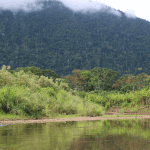Sustainable Finance, Before and After COVID-19: What the New Focus on Public Sector Investment Means for Blended Finance
Before COVID-19 hit in 2020, sustainable finance was on a clear pathway towards success. Virtually all major financial institutions were making public commitments to Environmental, Social and Governance (ESG) investing and impact investing. More investors – both high-net-worth individuals and common citizens – were demanding new options for impact-focused investments and wealth management strategies. The supply of products could barely meet the demand from capital, and private sector investment seemed poised to lead the way in bolstering climate resilience, building green economies and addressing staggering inequalities.
Then the pandemic started, necessitating an expanded role for government and a new focus on collaboration between the public and private sectors – perhaps best exemplified by the successful efforts to research and produce lifesaving COVID-19 vaccines. Suddenly, private capital was not assumed to be the sole driver of social impact, as the massive mobilization of government resources to address the pandemic and stimulate the global economy put the public sector’s role in the spotlight.
As the world moves gradually toward a post-pandemic era, the sustainable finance boom has continued. The sector continues to grow, with a recent analysis projecting that ESG assets may hit $53 trillion by 2025, comprising a third of global assets under management. But the public sector’s vital role in global development – and its involvement in regulating sustainable finance – have both become more substantial. Below, I’ll compare the pre- and post-COVID prospects for sustainable finance in developing countries, and discuss how blended finance can bring the public and private sectors together to maximize their combined impact where it is needed the most.
Assessing the Pre-COVID-19 Prospects of Sustainable Finance
Prior to the pandemic, sustainable finance had witnessed years of impressive but chaotic growth, as non-financial considerations were embedded at scale in the design of financial products for the first time in history. The rules of the game – e.g., what do ESG and impact investing constitute, and how is impact defined and measured? – were being written in real-time, along with standards and best practices. Both companies and their investors started to measure and to be measured based on their social and environmental impact. On one side of the ledger, instruments like green bonds dramatically boosted investment in renewable energy and other vital industries. On the other side, fossil fuel and other companies and industries began to be excluded from investments, as asset managers started integrating climate and other impact considerations into their investment strategies.
True, most of this wealth – and the interconnected investment strategies run by advisors and intermediaries aimed at allocating it to impact – remained far from the needs of developing countries. Still, something was happening, and the financial sector was in the driver’s seat, as regulators at this stage were merely trying to grasp the complexity of this new approach to investing. This phase of the industry’s development was characterized by market-driven innovation, passion, and the testing of new ideas and asset classes. The impact frontier of what constitutes ESG and impact investing expanded to new territories, from sustainable transport to the value of diversity and inclusion.
But as the market grew in scope and size, financial regulators and legislators started to require the disclosure of social and environmental performance, the measurement of ESG risks, and the definition of what constitutes a sustainable investment. This evolution of financial markets had created an opening not only for new investing models and opportunities, but also for greater government involvement.
COVID-19’s Impact on Public and Private Investment
The COVID-19 pandemic struck as this dynamic was unfolding, pushing public sector solutions and resources to the forefront of the global development conversation. Trillions of public dollars were mobilized to navigate the crisis, helping both companies and individuals to weather the fallout. Most importantly, many recovery packages included public incentives for private sector players to integrate sustainability into their businesses, along with new direct government investments in sectors such as energy efficiency and electric transport. These recovery packages provided unprecedented amounts of public funding to be blended with private investment.
However, developing countries were left out. They weren’t included in the trillions of dollars in public funding being mobilized in developed countries, as governments naturally focused those funds on their own populations. But they also did not have access to the capital markets or fiscal space that would enable similar funding packages of their own. Additionally, developing countries faced significant capital flight, as foreign direct investment and remittances declined in the first phase of the pandemic. These declines were particularly disruptive for the Least Developed Countries, as designated by the U.N.
On the plus side, the newly created public capital from debt and expansive monetary policies can be used cost-effectively to bring new impact-driven investments to developing countries. This can be accomplished by expanding the concept of blended finance.
The Need for Blended Finance in Sustainable Development
Blended finance, as defined by the OECD, is “the strategic use of development finance for the mobilization of additional finance towards sustainable development in developing countries.” It aims to attract – where possible and meaningful – commercial capital towards projects that contribute to sustainable development, while providing financial returns to investors at or below market rates. It features novel and traditional models for financing development that “blend” an initial investment, often from a philanthropic or government entity, with subsequent commercial tranches.
The pre-pandemic trend of sustainable private finance and the post-pandemic trend of increasing government involvement in the economy have created a unique opportunity for collaboration between the public and private sectors. The growth of sustainable financial products has created a new pool of capital that is driven by impact considerations beyond profit, while the resurgence of public interventionism has created new public capital that can be directed towards the creation of inclusive and sustainable economies. Since these objectives are aligned, why not blend the two capital sources? And why not allow this capital to flow to developing countries, where it is needed most?
The U.N. Joint SDG Fund, where I work as an Investment Advisor, aims to accelerate progress towards the Sustainable Development Goals (SDGs) by getting the right policies, financial instruments and incentives in place, and taking them to scale as quickly as possible. We started operations in mid-2020, with the aim of capitalizing upon these COVID-fueled funding trends by blending private capital with public resources to invest in developing countries. To date we have funded 101 U.N. programmes focused on integrated social protection or SDG financing, stimulating over 1,000 collaborations across the public and private actors. Under the Fund’s catalytic investment workstream, 28 country consortia, selected from 155 submissions from over 100 developing countries, worked closely to develop innovative blended finance solutions focused on their own countries’ needs, funded with U.N. support. The consortia were comprised of U.N. agencies, development banks, and private anchor investors and fund managers. They designed 59 financial instruments informed by feasibility studies and other assessments, and identified new partners and investors to provide further funding.
The business of nurturing an impact-driven pipeline is an area where the U.N. system can support progress. The matching of investors with investees remains challenging due to a combination of reasons – some of which are well-known in the literature. For instance, investors face unique risks when working in markets, geographies and sectors where they cannot rely on a sufficient track record of transactions and comparable metrics. Some impact ventures are still not ready for commercial investing due to market distortions (e.g., a lack of competitive markets, oligarchic behaviors that prevent market entry, market-distorting public subsidies, etc.). Others are excluded from investment because of non-functioning carbon markets, unproven track records, a lack of supportive legislation or the perception of higher risks. This is where U.N. agencies can make a difference when they work alongside entrepreneurs, governments and investors.
The Impact of U.N. Funding in Developing Countries
For instance, our funded intervention in Malawi aims to reduce poverty, hunger and inequality by creating jobs and supporting small businesses in the country’s undercapitalized agricultural sector. The impact fund, managed by Bamboo Capital Partners, will be Malawi’s first blended finance fund. It will invest patient capital to increase agricultural productivity and maximize impact. To locate investable opportunities, it will leverage market development efforts that go back several years, under the Malawi Innovation Challenge Fund and other company accelerators. This pool of impact-driven companies constitutes the initial investment pipeline of the impact fund. A technical assistance facility will help to further source the pipeline, assist businesses and reduce associated risks. This programme will have an expected financial leverage of US $28 million, with one first-loss tranche open to development finance institutions and donors, and one mezzanine tranche open to impact investors and local financial institutions. Local pension funds may also invest.
Similarly, in Fiji we aim to conserve and protect priceless income-generating natural wonders – such as coral reefs, marine life and unspoiled coastal ecosystems – while also empowering local communities. A pipeline of blended finance transactions, facilitated by the U.N. and involving local partners, will fund sustainable waste, agriculture, fishery and ecotourism efforts in the country. And in Indonesia, we’re crafting a new generation of financial products to combat climate change and transition the country to low-impact energy, environmental conservation and impact-driven businesses. The Government of Indonesia’s first Asian sovereign SDG bond (EUR 500 million), issued in September, is the first offering supported. These products will include more SDG-aligned thematic bonds and sukuk, a commercial impact fund, and SDG-linked loans from commercial banks.
We’re leveraging blended finance to incubate new businesses/programmes in an additional 12 countries spanning Asia, Africa and Latin America. These programmes tell a similar story, in which we work together with developing countries to maximize their market-readiness for impact. To be successful, we need visionary entrepreneurs and patient investors with a willingness to collaborate in markets, sectors and themes that require new, flexible government regulations. We welcome you to contact us if you’re interested in learning about or participating in these efforts.
Massimiliano Riva is an Investment Advisor for the U.N.’s Joint SDG Fund.
Photo courtesy of UN Women/Narendra Shrestha.
- Categories
- Coronavirus, Investing



